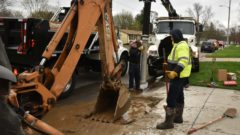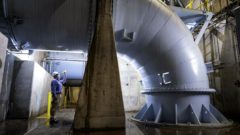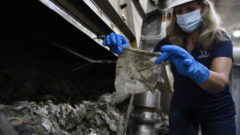Joint Action Plan for Clean Water Infrastructure and Services in the Great Lakes Region: Project Archive
Library
Joint Action Plan for Clean Water Infrastructure and Services in the Great Lakes Region: Project Archive
This project has ended. Archived project materials are available below.
The Great Lakes Commission’s Clean Water Infrastructure and Services Working Group developed a Joint Action Plan for Clean Water Infrastructure and Services in the region that outlines actions to address a backlog in needed upgrades and repairs to water-related infrastructure in the eight Great Lakes states and two provinces over the next 20 years — everything from wastewater treatment plants to stormwater pipes and drinking-water filtration systems. This backlog is conservatively estimated to cost $271 billion, and many experts believe that figure is a significant underestimate. The plan also calls for a better understanding the state of regional water infrastructure and the true needs to achieve a 21st century system.
The Action plan was endorsed by the full Commission at its 2017 Annual Meeting.
• Joint Action Plan
For More Information
Nicole Zacharda
Program Manager, Great Lakes Commission
734-971-9135
nzacharda@glc.org
Great Lakes Commission
https://www.glc.org/work/water-infrastructure-action-plan




